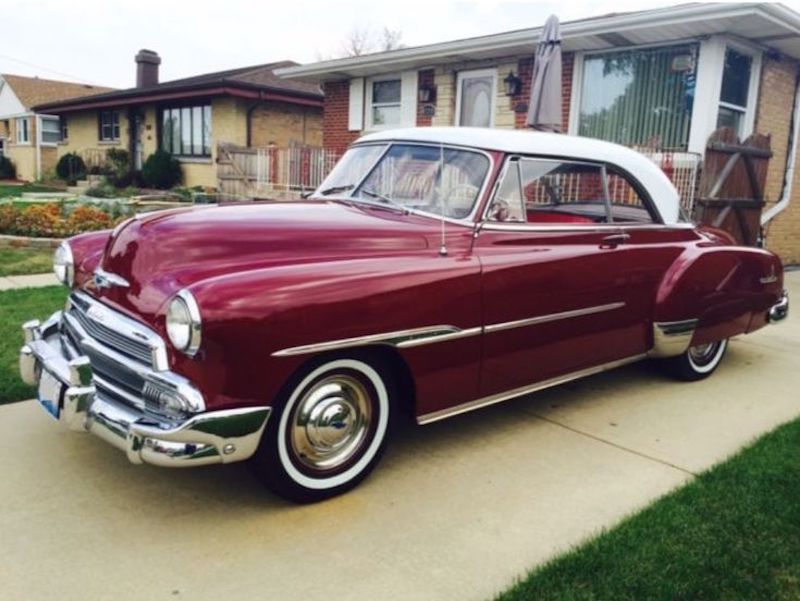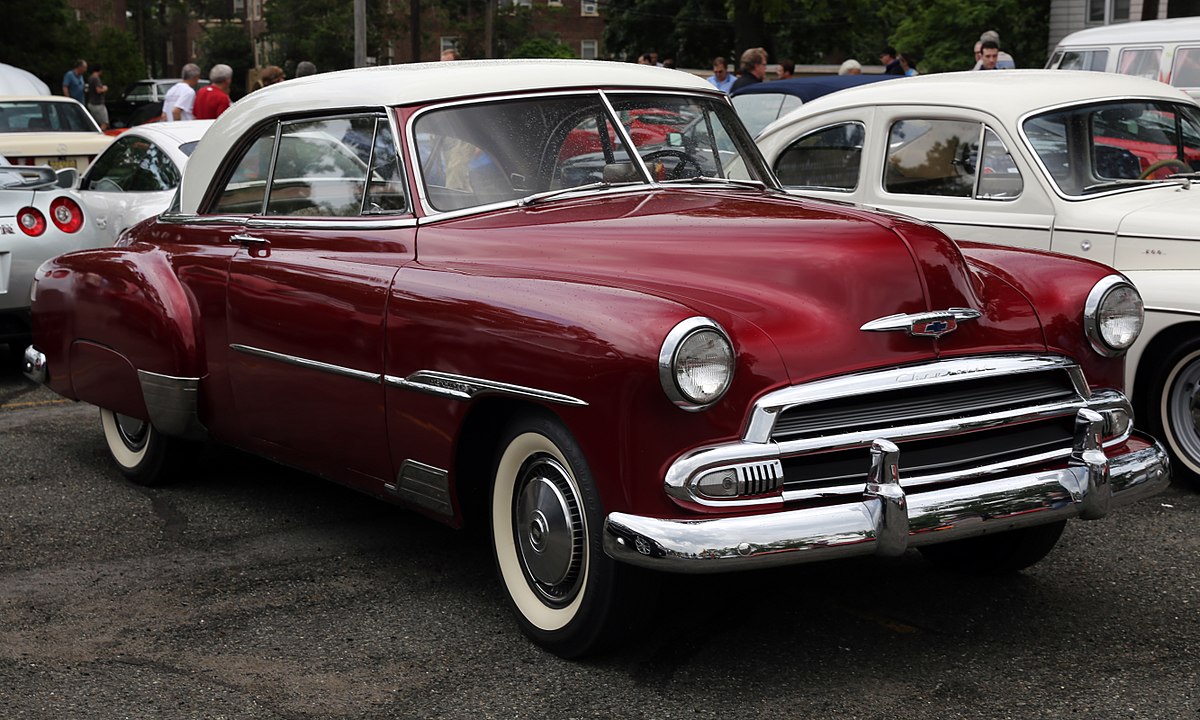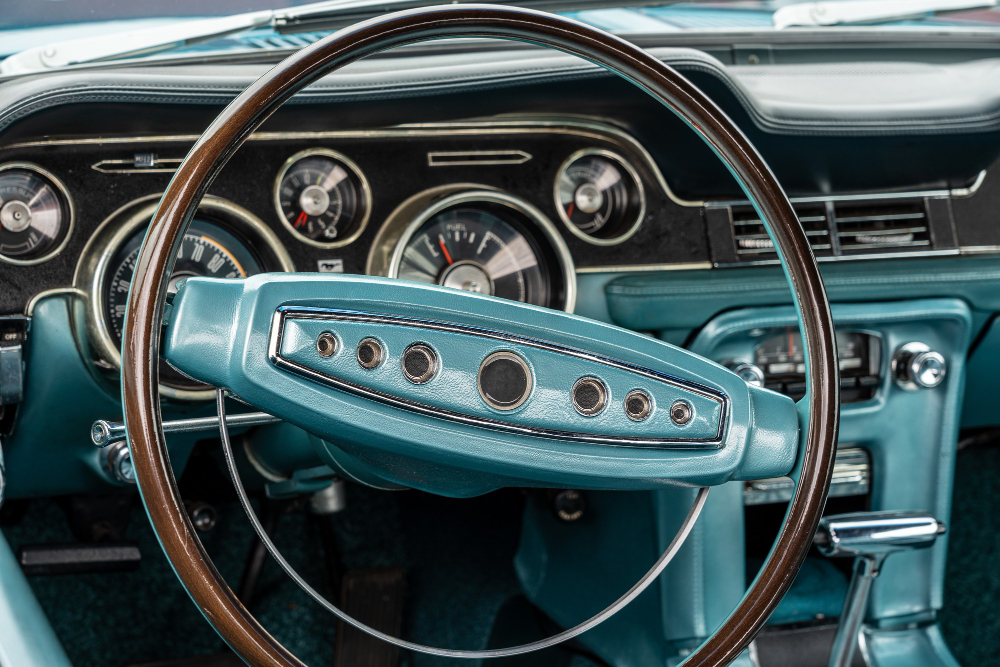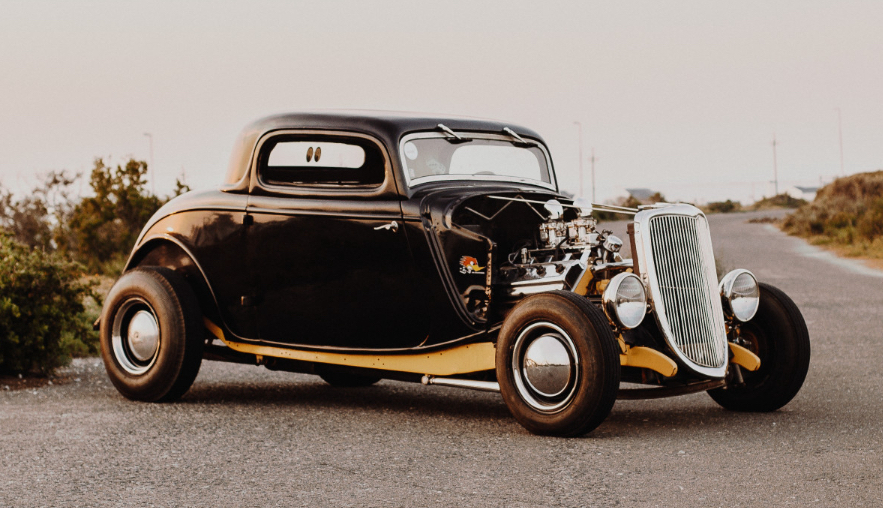Do you find yourself captivated by the allure of classic cars?
Whether it's the sleek design of the 1951 Chevrolet Bel Air or the rich history each vehicle carries, there's something undeniably enchanting about them.

But these automotive gems are more than just a feast for the eyes; they represent unique investment opportunities.
Before you venture into the world of classic car investments, it's crucial to navigate its intricacies.
This guide offers insights into the rewards and challenges of investing in these timeless beauties.
And for those with a penchant for luxury, don't miss our Ultimate Guide to Investing in Luxury Cars. Dive in and embark on a journey through the world of classic cars.
Contents,
The Benefits: Why Invest in Classic Cars?

1951 Chevrolet Bel Air
In the 1950s, cars were primarily seen as a means of transport. The average cost of a new car, such as the iconic 1951 Chevrolet Bel Air, was around $1,510.
By the end of the decade, this price had risen to $2,200. The 1951 Chevrolet Bel Air, known for its sleek design and distinctive tailfins, was one of the standout models from this era.
Fast forward to today, and the value of these classic cars has soared. The Chevrolet Bel Air, which once sported a price tag of up to $2,200, is now valued at an average of $35,400.
Pristine models fetch even higher prices due to their rarity and Chevrolet's discontinuation of their production. For more details about Chevrolet, check the link below. Further Reading
Let's delve deeper into the benefits and challenges of investing in classic cars.
This significant appreciation in value has led many entrepreneurs to start businesses centered around these vintage vehicles, particularly the Bel Air.
However, like any investment, there are both advantages and disadvantages to consider when delving into the world of classic cars.
The Upside: Benefits of Classic Car Investments.
Brings in Huge Profit
The value of collectible cars rises when they are unique and irreplaceable. The international classic car market is projected to grow from approximately $30.9 billion in 2020 to around $43.4 billion in 2024.
Uniqueness
Classic cars from the golden era showcase creativity and originality in design, engine, and operation, making them stand out from modern vehicles.
Manageable Fees
While investing in collectible cars can be expensive, there are ways to reduce some of the associated costs, such as purchasing license plates for classic vehicles older than forty years.
Cons of Investing in Classic Cars
Qualified Mechanics
Finding mechanics experienced in repairing antique cars can be challenging, and the few who are qualified often charge high fees. Original replacement parts for these cars can also be hard to come by.
Waste Risk
Some investors may make incorrect predictions about which cars will become collectible, leading to significant losses.
Need for Storage Facilities
Classic cars require special storage facilities, and transporting them can pose risks to their fragile structures.
Classic Car Collector's Tale: Robert's Experience
In Detroit, Robert, a classic car enthusiast, eagerly added a rare 1960s convertible to his collection. However, the joy was short-lived. Finding a mechanic skilled in vintage car repairs was a challenge, and when he did, the costs were exorbitant.
Original parts for the car were scarce and expensive. Robert also miscalculated the potential value of a 1970s sedan, leading to a significant financial setback.
As his collection grew, so did the need for specialized storage, and transporting these delicate vehicles became a logistical challenge.
Summary: Every investment comes with its set of advantages and disadvantages, and classic cars are no exception. While the business can be profitable, it also carries risks and uncertainties.Investors should thoroughly research and weigh the pros and cons before venturing into the classic car market.
Classic Cars Potential Risks of Breakdowns

Classic cars, while cherished, are not always equipped to handle modern driving conditions. As a result, they often encounter specific issues that can lead to breakdowns:
Overheating
Classic cars are prone to overheating due to reasons like low coolant levels, damaged cooling fans, broken fan belts, defective thermostats, and clogged radiator pipes. Regular inspections and using genuine spares can help mitigate this risk.
Brake Issues
Vintage vehicles typically lack brake warning lights, making it challenging to assess the brake system's status. Brake pads wear out over time, and maintaining the brake liquid at the recommended level is crucial for safety.
Engine Breakdown
Old engines can suffer damage if operated with burnt engine oil for extended periods. It's advisable to check the engine oil level after about 2000 miles and ensure it's within the recommended range.
Weathered Paint
Harsh cleaning agents can strip the natural sheen of a classic car's paint. It's best to use pH-balanced car wash soap and avoid cleaning with a dry cloth to prevent damage from dust particles.
Wheel Bubbling
Proper wheel alignment and balancing are vital for classic cars. Misaligned wheels can lead to uneven tire wear and reduced handling capabilities. If the car drifts or vibrates unusually, it's essential to consult a wheel specialist.
It's always in the best interest of classic car owners to ensure they have adequate insurance coverage to protect against unexpected breakdowns and other risks.
Characteristics of Classic Car Investors
Classic car investors are individuals who see value beyond the immediate aesthetics of vintage automobiles.
They understand that investing in classic cars involves not only the appreciation of the vehicle's historical significance and unique design features but also a deep knowledge of market trends and factors influencing value, such as rarity, provenance, and condition.
Ralph Lauren: A Passion for Classic Cars

Ralph Lauren
Fashion mogul Ralph Lauren is not just known for his iconic polo shirts and luxury clothing line.
He's also one of the world's most prominent classic car collectors. His collection, valued at hundreds of millions of dollars, includes rare models from Ferrari, Bugatti, Alfa Romeo, and more.
Lauren's 1938 Bugatti Type 57SC Atlantic Coupe is one of the most valuable cars in the world, showcasing his keen eye for valuable and historically significant vehicles.
Read more about Ralph Lauren's car collection here.
Successful classic car investors, like Lauren, often possess extensive knowledge of the market, individual car models, and the broader history of the automotive industry.
They leverage the expertise of classic car experts, such as appraisers, restorers, and auction houses, to make informed decisions. Moreover, these investors are aware of the various costs associated with classic car investments, from maintenance and restoration to storage and insurance.
They strategically balance risks and rewards, often diversifying their portfolio with a mix of high-risk, high-reward opportunities and more stable, lower-risk investments.
7 Key Considerations When Investing in Classic Cars

Classic car investments are more than just about owning a piece of automotive history; they're about understanding the nuances that drive the value and appeal of these vintage machines. Here are seven critical considerations for potential classic car investors:
Purpose of Buying
Your motivation for purchasing a classic car will guide your entire investment journey. Whether driven by nostalgia, passion, or financial gains, this purpose will influence every decision.
Realistic Expectations
The classic car market is unpredictable. Setting realistic expectations helps avoid disappointment and ensures you're prepared for market fluctuations.
Where to Buy
With Video Reference: "The platform you choose for your purchase, be it auctions, dealers, or private sales, can significantly impact your buying experience and the outcome of your investment. For a visual guide on buying classic cars, you might have checked out the now-unavailable video titled 'Practical Classics Advice - How to Buy a Classic Car' on YouTube, which offered valuable insights into the process."
Inspection is Crucial
Given the age of classic cars, wear and tear are inevitable. An inspection ensures you're aware of the car's condition, reducing the risk of unforeseen expenses.
Price Considerations
Financial prudence is key. Understand the market value of your chosen car and consider all associated costs to ensure a sound investment.
Popular Models for Starters
If you're new to classic car investing, starting with popular models can offer a smoother entry, thanks to readily available resources and a supportive community.
Historical and Cultural Significance
The backstory of a car can add immense value. Cars with a storied past or cultural impact can offer unique investment opportunities.
By understanding these seven elements, you'll be better equipped to navigate the classic car market, ensuring a rewarding and informed investment journey.
Yes, you can copy and paste the section I provided, but you'll need to make sure it fits seamlessly within the design and layout of your blog. The visual representation I provided is a textual representation of how it might look, but the actual implementation will depend on your website's design capabilities.
🚗 Reflect on Your Classic Car Knowledge
As we near the end of this article, take a moment to ponder over these intriguing classic car questions:
- Did you know when the Chevrolet Bel Air was first introduced?
It was in 1951, and it quickly became an iconic representation of its era. - Have you considered the primary challenges in classic car investments?
One of the most significant challenges is finding qualified mechanics who can handle these vintage beauties. Original replacement parts can also be hard to come by. - Which classic car comes to your mind when you think of distinctive tailfins?The Chevrolet Bel Air is renowned for this design feature, making it stand out even today.
Concluding Thoughts on Whether to Invest in Classic Cars or Not
Investing in classic cars is more than just a financial decision; it's a journey fueled by passion and history.
While the allure of these automotive gems is undeniable, it's essential to approach this venture with knowledge and strategy.
Whether you're in it for the love of cars or the potential returns, understanding the market is key.
However, as with any investment, it's not without its challenges.
From the intricacies of maintenance and the hunt for rare parts to the unpredictability of the market, classic car investing requires diligence, research, and a genuine love for the craft.
For those who are willing to navigate these waters, the rewards can be both tangible and intangible, offering not just financial returns but also the joy of preserving a piece of history.
As you consider this investment avenue, remember to weigh the pros and cons, seek expert advice, and always follow your passion with prudence.
